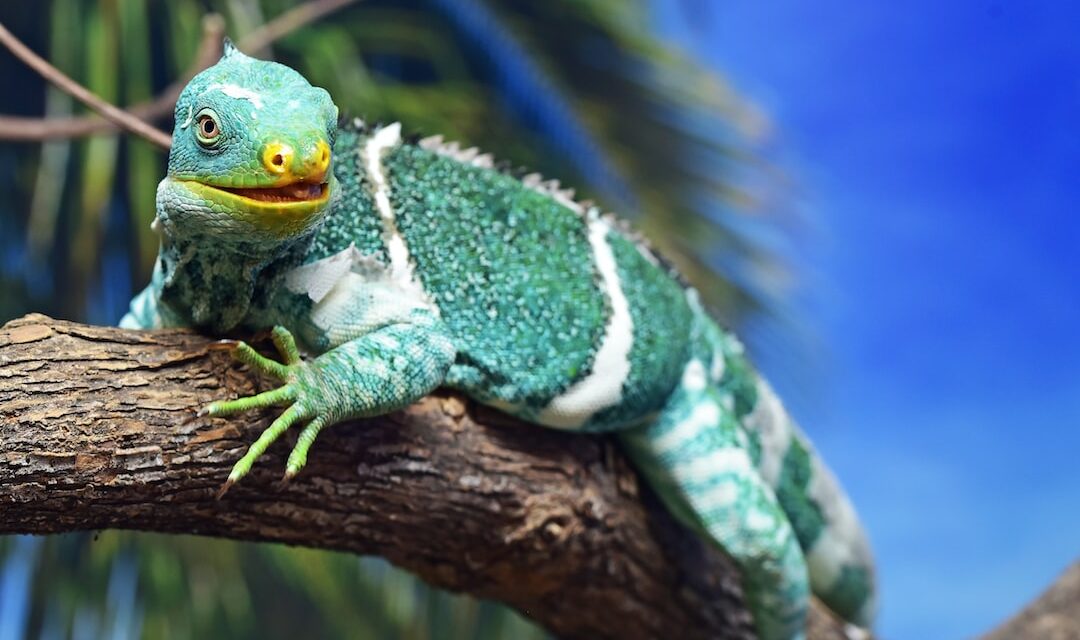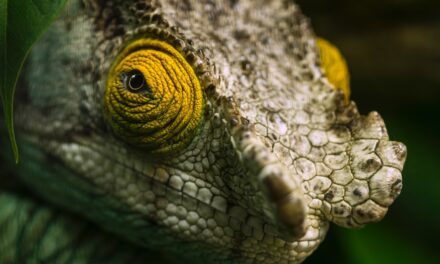Chameleons are a fascinating and unique species of reptiles that have captured the imagination of people around the world. With their ability to change color and blend into their surroundings, chameleons are often seen as mysterious creatures. In this article, we will explore the behavior, characteristics, and potential dangers associated with chameleons. By understanding these aspects, we can gain a better appreciation for these remarkable animals and work towards their conservation.
Understanding Chameleon Behavior and Characteristics
Chameleons are known for their ability to adapt to their environment. They have specialized cells in their skin called chromatophores, which contain pigments that can change the color of their skin. This allows them to blend into their surroundings and avoid predators. Additionally, chameleons have independently moving eyes, which gives them a 360-degree field of vision. This helps them spot prey and predators from all angles.
Chameleons also have a unique way of communicating with each other. They use a combination of body language, color changes, and vocalizations to convey messages. For example, males may change their colors to attract females during mating season, while females may change their colors to signal aggression or submission. Chameleons also use body movements such as head bobbing or tail curling to communicate with each other.
The Myth of Chameleons Being Dangerous
Chameleons are often perceived as dangerous creatures due to their appearance and unique characteristics. Their sharp claws and long tongues can give the impression that they are aggressive or venomous. However, this is largely a misconception. Chameleons are actually quite shy and prefer to avoid confrontation whenever possible.
One common myth about chameleons is that they can shoot their tongues out with great force and accuracy to catch prey or defend themselves. While it is true that chameleons have long tongues that they use to catch insects, they do not shoot their tongues out like a projectile. Instead, they use their tongues to quickly snatch prey from a close distance.
Chameleon Venom: Separating Fact from Fiction
Another misconception about chameleons is that they are venomous. While it is true that some species of chameleons have venom glands, the venom they produce is not harmful to humans. Chameleon venom is primarily used to subdue and kill their prey, which consists mainly of insects. The venom is not potent enough to cause harm to humans, and chameleons are not aggressive towards humans unless they feel threatened.
Chameleon Bite: How Harmful Can It Be?
Chameleons have small mouths and teeth that are designed for eating insects. While their bites can be painful, they are not typically harmful to humans. Chameleons may bite if they feel threatened or cornered, but this behavior is rare. It is important to note that chameleons should be handled with care and respect to avoid any potential bites or injuries.
Chameleon Diseases and Health Risks for Humans
Chameleons can carry certain diseases that can be transmitted to humans. One example is salmonella, a bacterial infection that can cause diarrhea, fever, and abdominal cramps in humans. It is important to practice good hygiene when handling chameleons or cleaning their enclosures to minimize the risk of infection.
To prevent the spread of diseases, it is recommended to wash hands thoroughly after handling a chameleon or cleaning its enclosure. It is also important to keep the chameleon’s enclosure clean and provide proper nutrition and veterinary care to ensure its health.
Chameleon as Pets: Safety Precautions and Tips
Owning a chameleon as a pet requires careful consideration and responsibility. Chameleons have specific habitat requirements, including temperature, humidity, and lighting needs. It is important to provide a suitable enclosure that mimics their natural habitat and allows for proper thermoregulation.
When handling a chameleon, it is important to approach them slowly and gently to avoid causing stress or injury. It is also important to avoid handling them too frequently, as this can cause stress and potentially harm the chameleon.
Chameleon Conservation Efforts and Threats to their Survival
Chameleons face numerous threats to their survival, including habitat loss, climate change, and illegal pet trade. Many species of chameleons are listed as endangered or threatened due to these factors. Conservation efforts are crucial to protect chameleons and their habitats.
Conservation organizations work to raise awareness about the importance of chameleon conservation and implement strategies to protect their habitats. These efforts include habitat restoration, captive breeding programs, and education initiatives to promote responsible pet ownership.
Chameleon Research: What Science Tells Us About their Danger Level
Scientific research has provided valuable insights into the behavior and characteristics of chameleons. Studies have shown that chameleons are not aggressive towards humans unless they feel threatened. Their ability to change color is primarily used for camouflage and communication rather than aggression.
Research has also shown that chameleons play an important role in their ecosystems as predators of insects. By controlling insect populations, chameleons help maintain the balance of their ecosystems.
The Truth About Chameleons and Our Perception of Them
In conclusion, chameleons are fascinating creatures that have unique behaviors and characteristics. While they may be perceived as dangerous or venomous, these misconceptions are largely unfounded. Chameleons are shy animals that prefer to avoid confrontation whenever possible.
Understanding the truth about chameleons is important for their conservation and survival. By dispelling myths and educating others about these remarkable creatures, we can work towards their protection and ensure their habitats are preserved for future generations. It is crucial that we support conservation efforts and take action to protect chameleons and their ecosystems.










Recent Comments